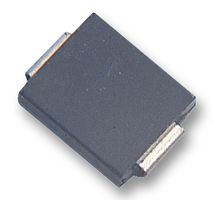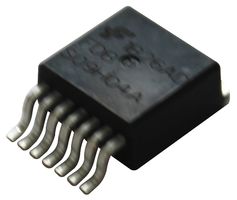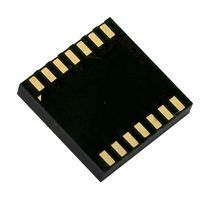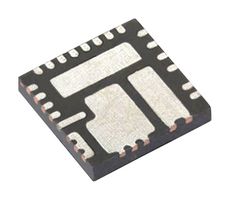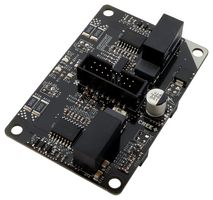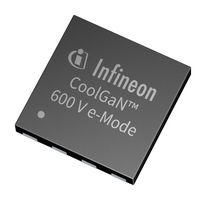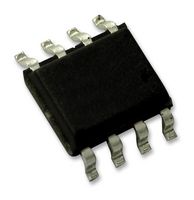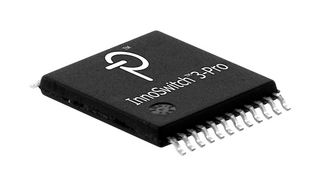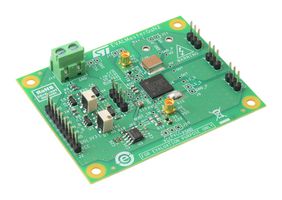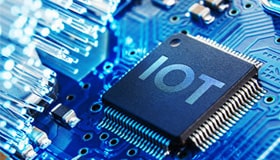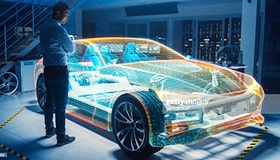Wide-Bandgap Semiconductor: The Future of SiC and GaN Technology
The semiconductor industry has made significant strides in the past few decades, gravitating towards smaller sizes and greater efficiencies. Wide bandgap semiconductor (WBG) materials such as Silicon Carbide (SiC) and Gallium Nitride (GaN) are of specific interest, having enabled significant performance improvements over the current standard silicon.
While silicon is an excellent general-purpose semiconductor, its limitations when dealing with high voltages, temperature, and switching frequencies are well-documented. As the market continues its race towards more power, the industry is accelerating away from silicon in favor of WBG semiconductor materials, which are convenient for power applications.
This article highlights the benefits of using SiC and GaN WBG semiconductors, reviews the current state-of-the-art devices and solutions, and shows how SiC and GaN can be a strong and viable candidate for future power electronics and systems applications.
Introduction
Wide bandgap material properties enable devices to operate at extreme temperatures, excessive power densities, elevated voltages, and higher frequencies, making them perfect for use in future electronic systems. SiC and GaN are designated WBG semiconductor materials based on the large energy required to shift electrons in these materials from the valence to the conduction band. For SiC, the figure is about 3.2 eV; for GaN, it's 3.4 eV compared to 1.1 eV for Si. The three times wider bandgap physical property results in a higher applicable breakdown voltage, reaching up to 1,700 volts in some applications.
A direct correlation exists between the bandgap and the critical breakdown (electric) field of a semiconductor. GaN and SiC breakdown fields are relatively similar, with GaN boasting a breakdown field of 3.3 MV/cm, while SiC has a 3.5 MV/cm breakdown field. Silicon has a breakdown field of 0.3 MV/cm, indicating that GaN and SiC are nearly ten times more capable of maintaining higher voltages. These breakdown fields make the compounds significantly better equipped to manage higher voltages and produce lower leakage currents.
The WBG semiconductor's higher electron mobility and electron saturation velocity allow a higher frequency of operation. GaN exhibits electron mobility of 1,500cm^2/Vs compared with silicon’s 1,450cm^2/Vs. The SiC, however, has sedate electron mobility, approaching 900cm^2/Vs, making them less suitable for high-speed switching applications. GaN, with its three times faster electron mobility than SiC, suits higher switching frequency operations.
The higher thermal conductivity of SiC (5 W/cmK) than GaN (1.3 W/cmK) or Si (1.5 W/cmK) implies that SiC devices are superior in heat conductance and can theoretically operate at higher power densities than either GaN or Si. Higher thermal conductivity combined with wide bandgap and high critical breakdown field gives SiC semiconductors an advantage when high power is a key desirable device trait. Figure 1 summarizes the physical and electric properties of SiC and GaN semiconductor materials.
SiC and GaN serve different power applications. Their differing characteristics determine their customized applications. GaN is in demand for low-power and high-frequency applications, while SiC is employed in high-power and high-voltage applications.
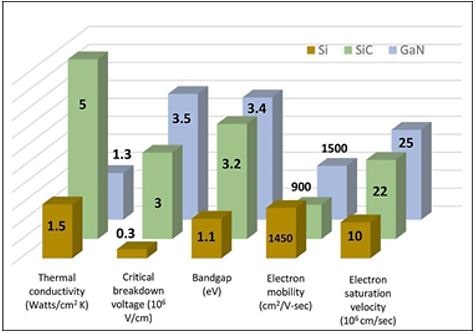
Figure 1: SiC and GaN material characteristics compared with Silicon
Benefits
Although WBG semiconductors cost more than silicon devices, they eventually become more competitive with improved manufacturing capabilities and expanded market applications. The physical and electric properties of SiC and GaN semiconductors permit devices to operate at much higher voltages, frequencies, and temperatures than conventional silicon. Excluding performance improvements, WBG-based device benefits include:
- Much smaller footprint and lightweight compared with comparable Si devices.
- Decreased cooling requirements and smaller passive components, contributing to overall lower system costs.
- Faster operations with higher switching frequency.
- Elimination of power losses that occur during power conversion.
- Systems with reduced lifecycle energy use and cost.
- Increased lifetime due to reduced losses and thermal stress.
- More reliable devices with higher efficiency than their silicon-based cousins.
SiC Devices and Solution:
SiC power devices have evolved from prototype samples to commercially available products. This is evident from the market, which now offers different SiC power devices from discrete components to power modules. It is now possible to find diodes, JFETs, BJTs, and MOSFETs made from SiC. Moreover, these devices are available at different rated voltages from 600 V to 1.7 kV and current ratings from 2.6A to 325A and beyond. Additionally, several manufacturers now produce SiC power devices such as Nexperia, Genesic, Infineon, onsemi, MICROCHIP, ROHM, STARPOWER, Ween Semiconductors, STMicroelectronics, Vishay, Wolfspeed, and Littelfuse. As a result, the WBG technology has matured to the point where it is considered a viable replacement for Si parts.
SiC diodes are mostly Schottky diodes (aka Schottky barrier diodes, or SBDs). SiC Schottky diodes offer higher switching performance, efficiency and power density at reduced system costs. In addition, these diodes provide zero reverse recoveries, low forward voltage drop, current stability, high surge voltage capability, and positive temperature co-efficient. The market now serves a wide portfolio of SiC diodes with a breakdown voltage of 650V, 1200V, and 1700V and a continuous forward current (If) rating from 1A to 370A. Standard packages are TO-247, TO-220, and SMD.
SiC FETs unfold new applications at increased power and higher voltage. As direct substitutes for IGBTs and Si-MOSFETs, SiC FETs showcase low-loss, high-temperature handling capability, low on-state resistance over the temperature range, and low switching losses. SiC MOSFETs, with higher breakdown voltages, better cooling, and temperature endurance, can be made physically compact as a result. IGBTs (insulated-gate bipolar transistors) are primarily used for switching voltages above 600V, but SiC materials make MOSFETs usable to 1700V and higher currents. SiC MOSFETs also have significantly less switching losses than IGBTs and operate at comparatively high frequencies.
SiC MOSFETs require special SiC gate drivers to provide a negative voltage to the gate in the MOSFETs off state, and supply high charge/discharge pulse current. In addition, they are sufficiently fast for gate operations in the nanoseconds range. Paying careful attention to gate driver design ensures optimal performance during switching transitions and is essential to maximize these inherent advantages of SiC MOSFETs. New designs in all power conversion areas, including high-power AC-DC and DC-DC converters, are increasingly using SiC FETs.
In addition to the discrete component market, the consumer can now find a wide variety of SiC power modules and evaluation/development boards for various applications (such as the motor driver).
Companies now offer a portfolio for easy selection as per the customer needs. Infineon, to give an example, is revolutionizing the market with its SiC and GaN portfolio products. The company's CoolSiC product range offers SiC Diodes, MOSFETs, hybrid modules, and evaluation boards with superior performance characteristics. This CoolSiC portfolio enables extremely efficient and compact system designs that meet future demands of smarter and better energy-efficient generation, transmission, and consumption.
Applications
The WBG first obtained market value in 1907 with commercial SiC light-emitting diodes radiating different color elements. Contemporary SiC and GaN semiconductor materials demonstrated remarkable performance in sectors such as electric vehicles (EVs)/ hybrid EVs, renewable energy, and 5G, with practical benefits to satisfy consumer and industry demand. Other applications where WBG power electronics have achieved appreciable energy savings include data servers, AC adapters, solar inverters, power supplies, charging circuits, and grid control. In addition, the holistic benefits of WBG materials make them ideal candidates for harsh-environment power electronics such as military, automotive, aviation, and space applications.
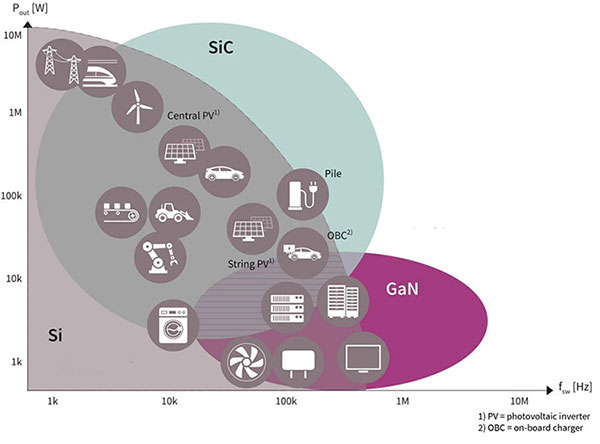
Figure 2. Technology positioning of Si, SiC, and GaN (Image Courtesy: Infineon)
Figure 2 shows the overlap applications where Si, SiC, and GaN find use with the choice percolating down to density, efficiency, and cost. Si-based products like super junction MOSFETs or IGBTs can be used over a wide voltage range (from a few to several hundred volts) and in several power classes. In contrast, SiC-based products find their ideal spot in voltage classes at and above 650 V (pushing beyond silicon limits and reaching power levels above 3 kV), and GaN-based devices are more suitable for voltage classes below 650 V. Both SiC and GaN are progressively better than Si as the operating frequency increases. Application requirements and design targets determine the technology of choice. Si semiconductor elements are a cost-effective solution for most contemporary energy efficiency and power density requirements, but in the case of some specific design requirements such as thermal or ultra-high density, SiC and GaN devices are the optimal choice.
In the future, WBG products are expected to improve further and ultimately replace silicon-based devices. However, the adoption of SiC is expected to be a bit faster for specific applications due to its ease of use and relatively easy transition from super junction MOSFETs and IGBTs.
